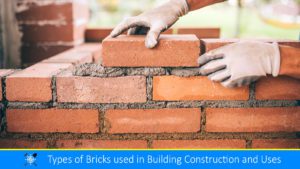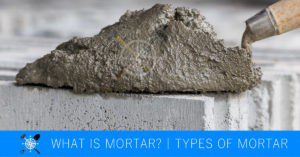Civil engineers and structure engineers must make wise decisions to provide better reinforcement for their construction and design. There are several types of reinforcement bars and two common types of steel bars used for reinforcement are TMT (Thermo-Mechanically Treated) bars and TOR (Thermal-Mechanically Treated) bars. While they may seem similar, there are significant differences between the two.
This article aims to provide insight into TMT vs TOR, highlighting their characteristics, advantages, and applications. Understanding their differences will benefit in making the right choice for providing reinforcement in the construction without costing a huge loss of money or executing the construction work economically and sustainably.
What are TOR Bars?
TOR bars are a type of steel reinforcement bars that are commercially produced under the tread name of TOR-steel. The reinforcement bar in this category consists of a series of deformations, lugs or ribs on their surface hence the term deformed is used to describe such kind of rebars. The characteristic feature of deformations which is uniformly spread on the surface enhances the bond between the steel and concrete. These deformations will prevent the slipping of steel bars in the concrete resulting in better bonding between the two materials.
They are produced in two different methods. In the first method, the bars are rolled from steel billets consisting of ribs on the surface. The second method involves stretching and twisting the mild steel (250MP) in a repeated manner. The rebars that are produced in the second method are known as Cold Twisted Deformed (CTS) bars.
These bars do not have a definite yield point and demonstrate an increase in yield considerably. Its tensile and bond strength also increase significantly when twisted hot and cold. TOR bars have a higher tensile strength than MS steel bars.
Twisted deformed bars are available in two grades, Fe415 and Fe500, and are commonly available from 8 mm to 32mm. Figures 415 and 500 indicate steel’s yield strength.
What are TMT Bars?
TMT bars are high-strength reinforcement steel bars made through a specialized process involving heating (at about 1000°C) and rapid cooling (with high-pressure water jets at a cooling rate of 200 °C/s). The technology behind TMT bar production, known as TempCore™, was developed in Belgium. After initial cooling, the bars are allowed to cool naturally in the atmosphere, during which the outer layer is tempered by residual heat from the core, creating a strong, durable structure.
The use of TMT carbon steel bars has become common for the reinforcement of concrete structures in most parts of the world and in the areas where earthquake resistance design is needed. It exhibits excellent properties of ductility inherited from the inner ferritic-perlitic core. The outer martensitic case contributes to increases in their hardness and durability against corrosion.
TMT bars typically have a well-defined yield strength, especially compared to other types of reinforcement steel. The studies show that the microstructure of TMT has contributed to its ultimate tensile strength and impact load. The lugs or ribs pattern on the surface has also contributed to excellent bond strength between rebar and concrete.
The application of TMT has been found in a wide range of construction industries, including coastal and marine environments which are susceptible to corrosion, bridges, flyovers, dams, industrial structures, high-rise buildings and underground platforms.
Also, read: Which is better: TMT and TMX steel?
TMT vs TOR: Point of Difference
There are several similarities between the TMT and TOR rebar, their differences are computed in the following subheading.
Manufacturing Process:
TOR steel bars are manufactured with heat treatment followed by cold twisting deformation. On the other hand, TMT rebar is manufactured with heat treatment technology known as “TempCore” originated in Belgium.
Steel Composition:
TMT bars require less steel compared to TOR bars. Specifically, Fe-500 TMT bars use 20% less steel than Fe415 TOR bars. As a result, TOR bars consume 20% more steel than TMT bars, making them less economical in terms of production.
Weldability:
TOR bars are very difficult to weld with other types of steel. Whereas, TMT bars possess special properties that allow them to be easily welded with other types of steel as well as their type. Therefore, TMT bars are easily workable at the construction site.
Also, read: How To Calculate Unit Weight of Steel bar
FAQs:
Q: What is the cold twisted deformed bar?
Answer: The cold twisted deformed (CTD) bars are those steel reinforcement bars that are produced by stretching and twisting at room temperature forming a series of deformations or ribs on the surface.
Q: What type of rebar is ideal for earthquake-resistant structures?
Answer: TMT rebars are ideal for earthquake-resistant structures as they exhibit higher ductility compared to TOR and any other steel bars.
Q: Which grade of TMT bar is used for earthquake-resistant design?
Answer: Fe415 and Fe500 of TMT are generally used for earthquake-resistant design and construction.
Q: Why are TOR bars being replaced by TMT and TMX bars?
Answer: TOR bars are being rephased because they lack the corrosion resistance and flexibility of TMT and TMX bars. Modern structures favour materials that offer higher longevity and durability, which TMT and TMX bars provide.
References:
- Duggal, S.K. (2008). Building material. New Age International (P) Ltd., Publishers
- Deshpande, S. (2024, May 22). What is TOR Steel? Features, manufacturing process & more. Tata Nexarc Blog. https://blog.tatanexarc.com/da/what-is-tor-steel/
- N, N., Rajan, N., & Sandeep, S. (2017). ResearchGate. A study on variation of hardness of TMT and normalised steel bars under cold work. https://doi.org/10.13140/RG.2.2.24423.21927
- Bautista, A., Pomares, J., González, M., & Velasco, F. (2019). Construction and Building Materials. Influence of the microstructure of TMT reinforcing bars on their corrosion behavior in concrete with chlorides. 229, 116899. https://doi.org/10.1016/j.conbuildmat.2019.116899
- Priyesh, K. (2013). IJERT. Studies on properties of TMT steels for structural applications. https://doi.org/10.17577/IJERTV2IS80657
- Ghosh, A., & Ghosh, M. (2018). Tensile and impact behaviour of thermo mechanically treated and micro-alloyed medium carbon steel bar. Construction and Building Materials, 192, 657–670. https://doi.org/10.1016/j.conbuildmat.2018.10.098
![]()







